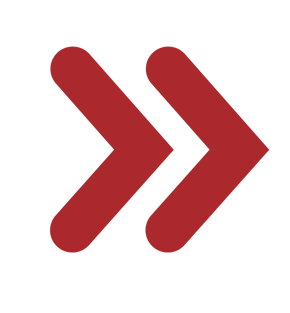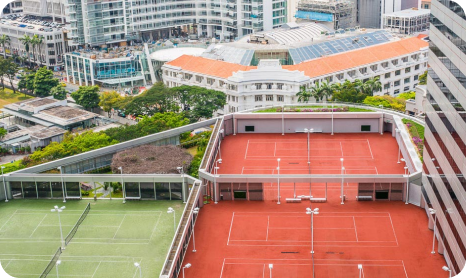If you like to regularly challenge your body, then you should prioritise recovery as much as the workouts themselves. For physically active individuals, going fast is often easier than going slow–and all too often, recovery takes a back seat to hitting a personal record (PR) and even pushing through discomfort or pain.
The simple fact is, no matter how hard or often you train, if you don’t take your recovery seriously, you will eventually end up burning out, regressing, or injuring yourself.
So, for those of you who resonate with what we’ve said, this blog is for you. We’re going to reinforce to you the importance of recovery, the different methods available, and how to plan recovery strategies after intense workouts or competitions.
Repair and restore
Tough workouts and competitions take a toll on your body. Between these types of activities, your muscles, joints, and central nervous system (CNS) need time to heal. Failing to do so may risk injury, burnout, or delayed returns from your activities.
For example, when you lift weights, you cause micro-tears to your muscle fibres, which repair during recovery to grow bigger and stronger. Without adequate time between workouts for this process to run its course, you could re-tear the muscles, leading to less growth, more soreness, and greater physical and mental fatigue.
This is why we recommend that you don’t treat your recovery as just a passive afterthought but instead, as an active part of your programme.
Recovery methods
While passive recovery is essential, such as nutrition, sleep, and rest, active recovery and targeted treatments can help accelerate the process and get you back to training faster.
Active recovery
Active recovery typically refers to low-intensity steady-state (LISS) exercise that stimulates blood flow, helps reduce stiffness, and promotes muscle recovery. There are two parts to this:
- Low-intensity: Think of this as a way to keep moving, but gently, staying far from exhaustion (low-to-moderate intensity).
- Steady-state: Low-impact exercises you can maintain for a long period without fatiguing your joints, such as swimming, cycling, brisk walking, and walking on an incline.
Active recovery is particularly beneficial after challenging exercise as it loosens stiff muscles and joints and helps remove metabolic waste (e.g. lactic acid) from the muscles. It does this by promoting blood circulation, which sends a steady flow of oxygen-rich blood to the muscles.
Sports massage

Therapeutic or deep tissue massage are both designed to help alleviate muscle soreness and tension. They help break down scar tissue, enhance mobility, and improve blood circulation.
The optimal frequency of sports massages depends on your training load and physical condition. Highly active individuals may schedule and find the most success with weekly or bi-weekly treatments, however, most will see benefits from a massage once a month.
Massage also plays an important role in supporting your nervous system. Studies show that "compassionate touch," a core element of massage, strongly activates the parasympathetic nervous system (PNS), which controls the body’s "rest and digest" activities. This promotes relaxation, reduces stress, and accelerates your body’s natural healing processes.
Ice baths

Ice baths are, ironically, a hot topic in the world of fitness recovery. The icy temperatures, ranging from 1–10 degrees Celsius, help reduce inflammation, which helps reduce muscle soreness. While this can be a boon to individuals who want to recover quickly between training, it can also be detrimental to muscle growth, since inflammation should be allowed to run its course to fully repair (and grow) muscle.
If you are experiencing acute muscle soreness, ice baths can be a good option, but just like any therapy that places your body under stress, should be approached with caution to ensure safety. We suggest limiting your time when in an ice bath, having someone with you, and seeking the advice of a healthcare professional beforehand if you have underlying cardiovascular issues.
Dry needling

Dry needling is a treatment physiotherapists use to relieve muscle pain and dysfunction. It involves the insertion of small needles into specific points on the body–usually tight muscles or knots–that cause discomfort or pain. The goal is to release tension in the target muscle.
While some individuals may feel discomfort during the treatment, there’s rarely a need to be nervous. Most people feel a slight pinch when the needle is inserted, followed by a twitch in the muscle as the tension is relieved. That twitch is normal it’s a good sign–it means the trigger point has been found and is being treated.
Recovery after an intense workout vs after a competition
The best form of recovery is the one that’s right for you, and that varies depending on several factors, not least the intensity and context of your exercise. Recovery after one of your typical workouts may be relatively simple, whereas recovery after a hard or unfamiliar workout, or a challenging competition, will require more consideration and care.
Post-workout recovery
After a hard workout, especially if it involves heavier weights, your body requires time to repair. However, you don’t want to rush recovery–you want the healing of inflammation to fully run its course. So, we recommend:
- Active recovery: Low-intensity exercise will keep your body loose while promoting blood circulation.
- Good nutrition: Refuel with adequate protein, carbohydrates, and healthy fats after your workout to support muscle repair and replenish glycogen (stored glucose).
- Hydration: Drink lots of water to replace fluids lost during exercise and promote the transportation of beneficial nutrients like amino acids and electrolytes.
Post-competition recovery
In situations where you’ve pushed your body to its limits, more impactful recovery methods may be required. In these instances, we recommend:
- All of the strategies we listed above.
- More rest and sleep: Clear your evening and morning calendar to ensure your body can rest as long as it needs to–this is when most of the healing happens.
- Sports massage or dry needling: These therapies can target tension and soreness in muscles that were over-fatigued during competition-level performance.
- Ice baths: If you are very sore, so much so that you may not even be able to stretch to release tension, ice baths may offer more immediate relief from muscle pain. Just make sure you follow the safety guidelines!
Personalised recovery programming
One of the most powerful and attractive aspects of our recovery programming is the Circle of Care. When you purchase a programme with us, you get access to all our 1–1 recovery treatments, all under one roof. Whether your body requires nutrition advice, sports massage, dry needling, shockwave therapy, and more, we’re here to plan a recovery program based on your preferences and needs.
Our team of highly qualified professionals have decades of experience working with both beginners and athletes, collaborating holistically to return you faster to the activities you love. So, allow us to help you combine training and recovery into a single, cohesive plan that’ll help you reach new heights in your fitness journey, whether that’s simply your upcoming workouts or a spot on the podium at your next competition.


.png?width=301&height=187&name=Website%20Navigation%20Images%20(3).png)

-1.jpg?width=1984&height=1196&name=UFIT%20Club%20Street%20Front%20(4)-1.jpg)






